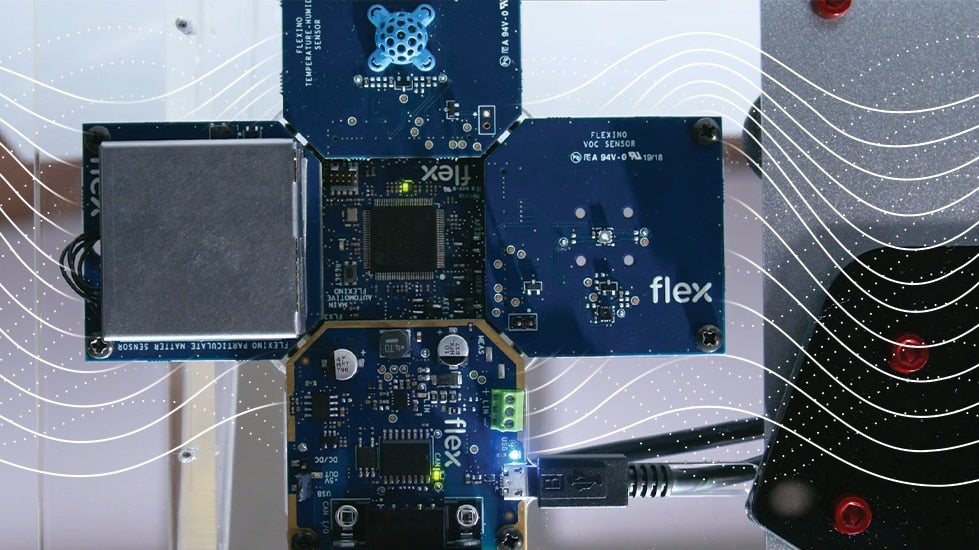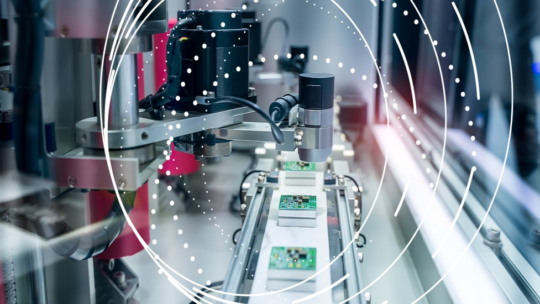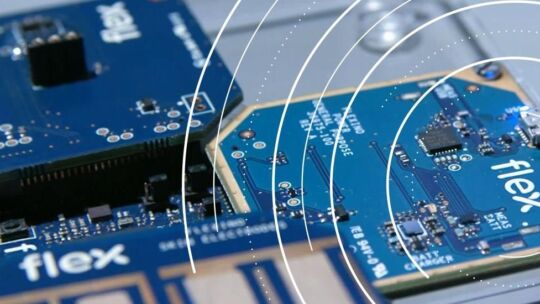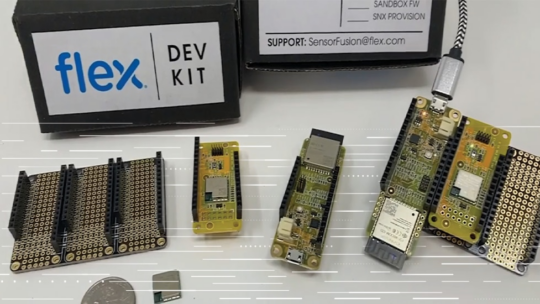
31 billion. That’s the current estimated number of Internet of Thing (IoT) devices, according to Security Today. It’s safe to say — sensors are everywhere. Every day, they’re transforming our interaction with the world around us through new medical, commercial, automotive, and industrial applications.

A push for touchless forms of human-machine interface (HMI) in medical and commercial spaces has put capacitive sensors, distance sensors (gesture recognition), and voice recognition in the limelight. A new generation of motion and positioning sensors, remote temperature sensing, skin sensors and vital signs monitoring technologies have already moved from complex and expensive systems down to an affordable, wristwatch scale.
Sensors are the core building block of intelligent products, and there’s a whole spectrum of sensor types that could transform your next product. From air and gas to power and color sensing and more, you can introduce new functionality, or augment existing sensor readings, by exploring the full array of sensor types available.
Monitor and improve air quality
As public health concerns increase over pathogen transmission, new technologies promise to help regulate air quality in enclosed spaces. In the case of COVID-19, recent findings published by Environment International emphasize the importance of ventilation to reduce the likelihood of airborne transmission. Airborne particulate and gas measurement sensors can help assess that effort, along with other air quality safety issues across a variety of spaces, such as hospitals, cars, and smart factories.
In healthcare, you might use this type of sensor to monitor quarantined areas of the hospital. Meanwhile, in a factory, the sensors can also detect hazardous gas levels that would threaten worker safety or indicate equipment malfunction. These same sensors can also help quiet consumer concerns around the cleanliness of their next rental car.
Save energy with power sensing
Power sensing is key for maximizing the user experience and sustainability of your product. In general, IoT products represent a complex power architecture that includes the sensor itself, the processing unit that interprets and filters data, and the chip that connects that data to the cloud.
You can use power sensors to monitor a device’s power consumption profile (on/off/asleep) to reduce energy drain. The sensor can determine if, for example, equipment in a factory is powered on or in sleep mode. Combined with measurements of machine utilization, this could enable analytics on power management and trigger a response to better optimize the automated on/off timing of the equipment based on workflow. Or, it could simply be a way to find out if you need to remotely power off a device.
One sensor, a myriad of ways
There’s a breadth of sensors, both under development and available to choose from, and each one has its own range of use cases. A partner with sensor design and manufacturing expertise in more than one industry can help you determine how a certain sensor type can best enhance your product, taking into account integration and industrialization challenges.
Color sensors, for example, have a wide set of applications across industries. In a washing machine, they can sense the mix of colors in a given load and trigger a heat setting recommendation. In healthcare, these sensors detect color changes arising from chemical reactions to indicate a certain patient testing result, like pregnancy or infection.
Inside cars or window displays, they also help optimize the white balance levels of illumination, indicating needed adjustments to color LED lighting based on the natural light present. Certain apps can follow the ambient light in a room and automatically adjust it depending on the latest emoticons used.
Accelerate product development with Flexino
The framework for all of these sensor applications, and more, is available to you through Flexino, our sensor integration development kit. With a set of 50-plus reference designs, Flexino helps you derive an architecture for sensor integration.
While there’s great opportunity in sensors, incorporating them successfully into an IoT product can be a time-consuming process. First, you have to choose the right sensors and processing units, then properly integrate them. There are a number of areas of consideration, including time to market, quality of design (including schematics and software), supply chain selection, costs, industrialization, and quality manufacturing.
We purposely developed this internal tool, accessible to you through our design centers, to create use cases with broad applications across segments. That way, you have a trusted starting point for tailoring sensor design and integration to your needs, as well as choosing the right materials for manufacturing.
Discover reference designs for sensors that read heart rates, measure liquid levels and air quality, and more. And be sure to check out our expanded gas sensing portfolio. We can also help you create actuators (to open and close a lid, for example) and connectivity boards that allow connection to the cloud.
Transform your product with sensors
The more you explore uses of sensor technology across industries, the more options you’ll find to transform your product. We can help you accelerate product development with trusted designs, strong manufacturing partnerships, and global supply chain capabilities through our Flexino solution.



